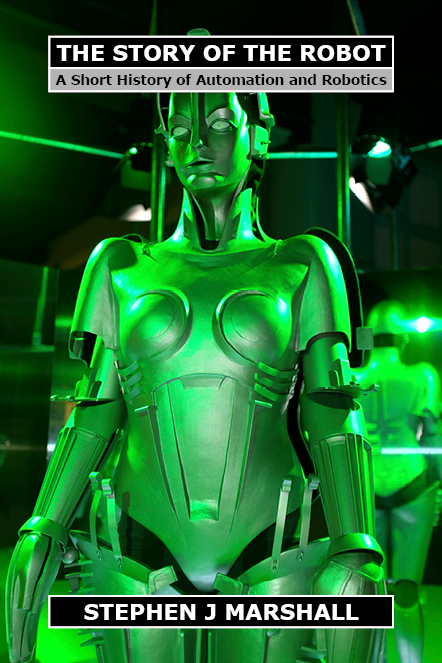When publishing my new paperback, The Story of the Robot, a few weeks ago via Amazon’s Kindle Direct Publishing platform, I decided initially not to create an eBook version. My main reason for this decision was the eBook format’s inability to support a proper index. This is no big deal for fiction books but can be a major drawback for non-fiction titles, where the reader relies on the index to dip in and out of the book in order to check facts or re-read certain sections.
Another reason was what I assumed to be the difficult and time-consuming task of reformatting my painstakingly formatted manuscript to make it suitable for an eBook. Unlike my previous book, The Story of the Computer, I’d gone straight to a highly formatted paperback edition, which I created using Adobe InDesign, rather than the more logical route of starting with a relatively unformatted eBook version before moving onto the paperback. InDesign does support eBook output formats but this would have meant manually stripping out all the paperback-specific formatting, a process that was likely to take some time and considerable trial and error to complete.
However, with initial sales of the new book in single figures, I soon realised that having an eBook version might help to stimulate demand. My previous book has sold in similar numbers of both formats over the past 5 years (although eBook sales do appear to be tailing off) and there is also the additional benefit of royalties from the Kindle Unlimited scheme, where you get paid for the number of pages a Kindle Unlimited subscriber reads in your eBook for the first time.
Having convinced myself of the need for an eBook version, I then investigated the options available for creating it. Several online resources suggested using Amazon’s Kindle Create to produce the eBook rather than doing it within InDesign. Kindle Create is a free desktop application that produces eBook interiors in Kindle Create Publishable Format (KPF) for publishing directly on the Kindle store. It will accept files in Microsoft Word format and will do its best to replicate the Word formatting in the eBook. As I’d written my book using MS Word before turning to InDesign to create the finished version, this sounded like the easiest option.
The conversion process was relatively straighforward, although Kindle Create does have a number of annoying bugs which required manual adjustment of formatting settings to bring certain elements back into line. The software is also quite limited in terms of functionality, particularly in how it handles images. Fortunately, it includes a built-in previewer which lets you see exactly how your eBook will look on a tablet, phone or Kindle reader. I found this feature invaluable for picking up several minor formatting issues that had crept into the eBook during the conversion process. Producing the eBook using Kindle Create took me about a day and a half, which was less time than expected and a fraction of the time taken to produce the paperback version using InDesign. It will be very interesting to see if having an eBook version has the desired effect in boosting sales of the new book!

